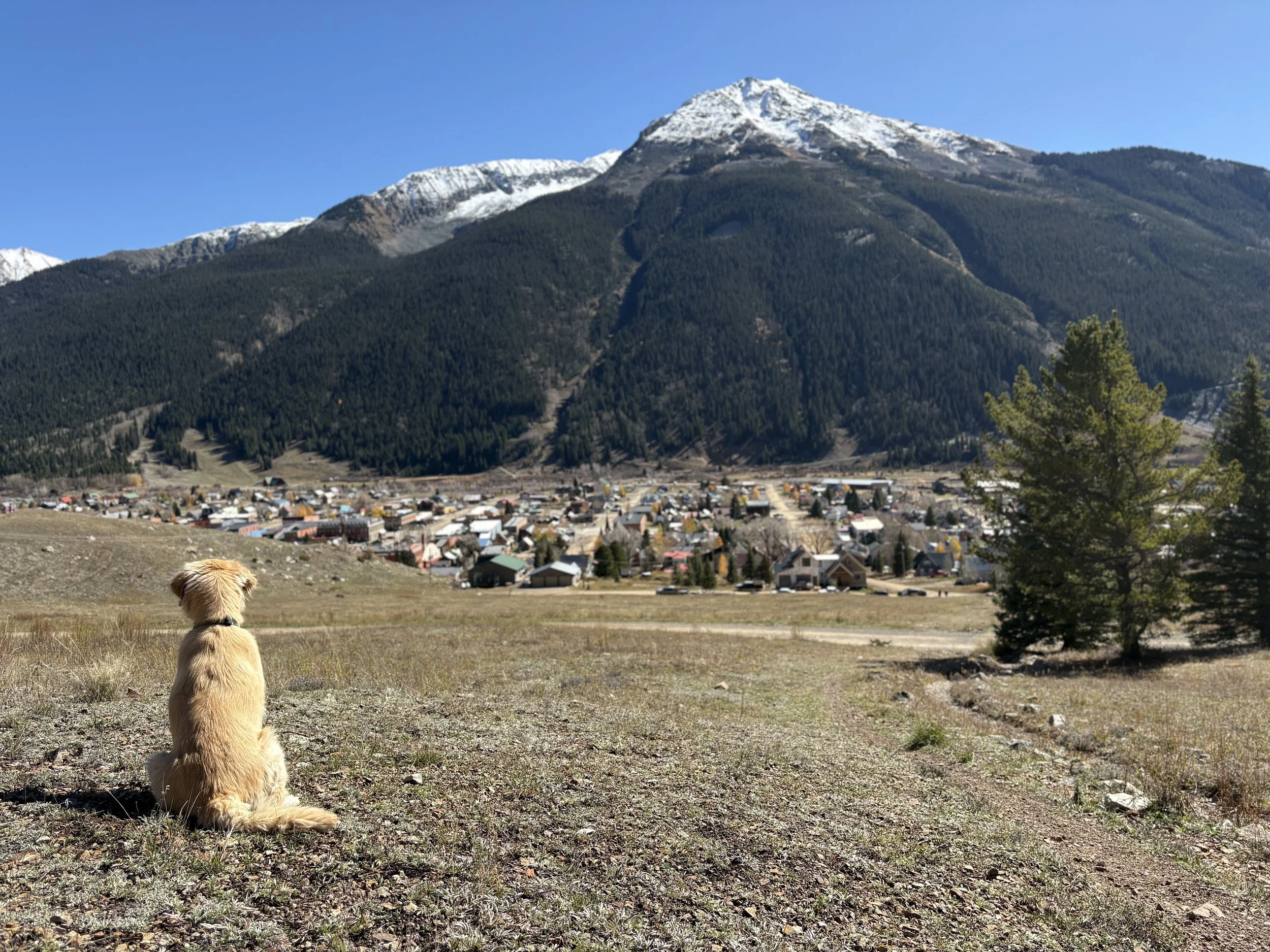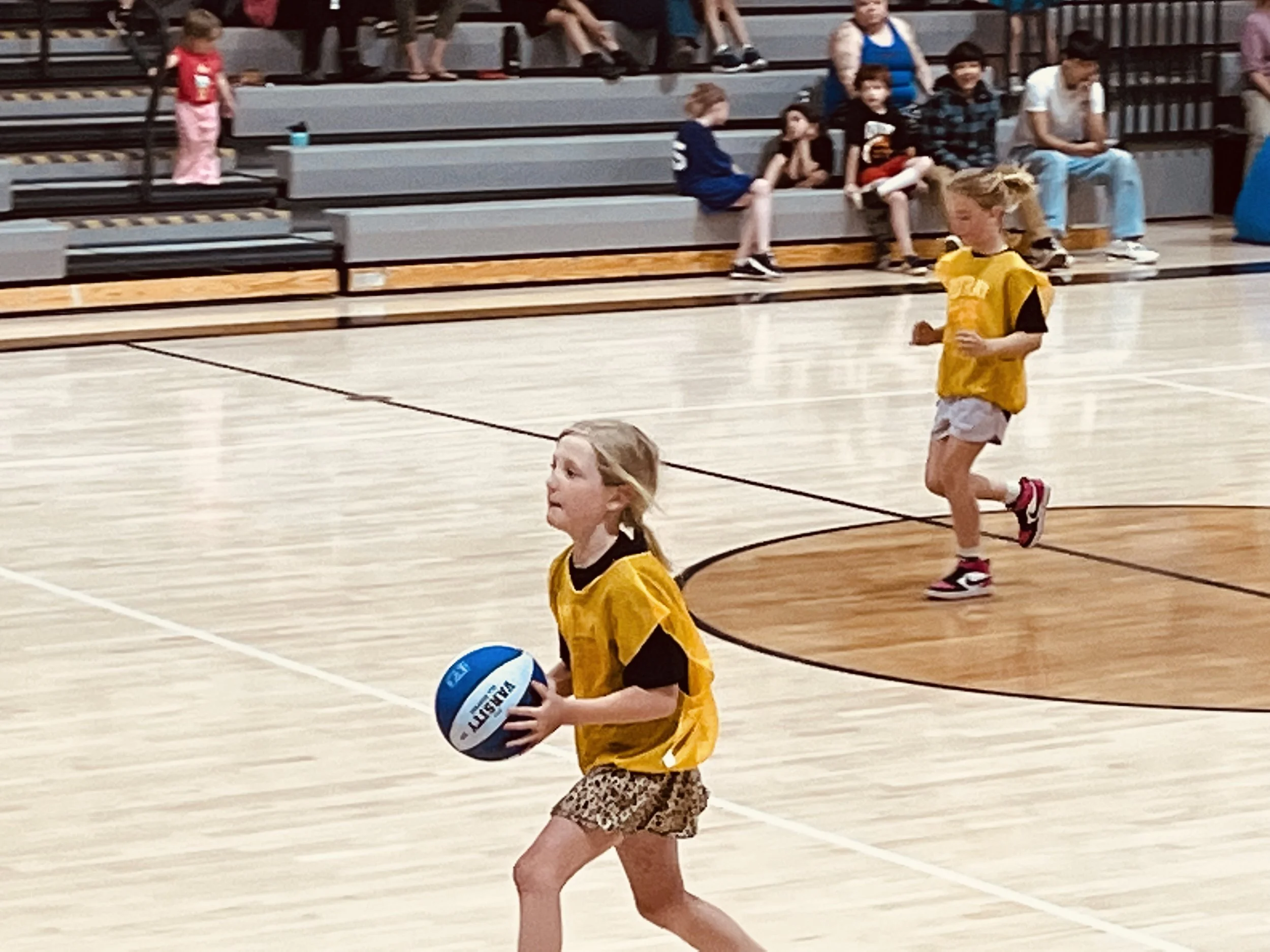Between Seasons: Finding Gratitude in Motion
Toots contemplating life in Silverton.
Silverton in late fall is a study in patience. Everything is brown—fields, hills, rooftops. The town holds its breath, waiting for snow, for the season to shift. I’m busy, restless, reflective. There’s a quiet that hums louder than the usual clatter of summer, and it makes me notice the small things: the way light hits the mountains, the bark on the aspens, the promise in the air.
I find it ironic that I feel most grateful for this place when I’m leaving it. Traveling for work, visiting other towns, meeting new people, I carry Silverton with me—in the way I talk about mountains, in the way I pause to laugh at small-town quirks. Distance sharpens affection.
There’s a subtle magic in explaining Silverton to outsiders. When I tell someone where I live, I see their faces change—curious, skeptical, enchanted. Suddenly, I’m defending it, bragging a little, sharing the charm of quiet streets, kids riding bikes to school, winters that are hard but beautiful. Gratitude isn’t just a feeling; it’s sharing, inviting, and connecting.
Sports, Mentors beyond School, Constantly On the Go
At home, the rhythm of family life keeps me grounded—or at least attempting to be grounded—in constant motion. This is the season Hawkins has multiple opportunities to play team sports: cross country, a staple in our town, and basketball, new in the last three years. Neither has enough players for a Silverton team, so our kids join with Ouray to form one. It’s busy. He’s at practice until at least 7 p.m., with multiple games or meets a week.
This weekend we went to Telluride for a basketball game. We got our asses kicked—but it was so fun. The kids have moved past the “deer in headlights” moment when they get the ball; now they look for open teammates, strategize shots, and actually play the game. Our friends in Telluride ask, “How do you even have enough kids?” and we just laugh. We don’t. What we do have is an incredible coach—father Keith Kranker—who volunteers so many hours to teach, guide, and make this all possible.
Watching Hawkins learn the game reminds me of the mentors I meet through my work with the American Camp Association. Each fall at our regional conferences, I’m humbled by camp directors who give their energy and heart to create transformative experiences for kids. There’s Aby, running a sports camp for girls; Martha, leading backcountry expeditions with an intentional focus on recruiting diverse campers; Perry, on the cusp of her career, ready for mentorship to fully ignite her spark. These educators teach themselves to teach others—and in that, I see the same care, patience, and love I see on the basketball court.
Stepping Away
Sometimes, I realize, the best way to love a place—or a life—is to step away from it. Movement renews perspective. Travel reminds me that comfort doesn’t have to mean complacency. Talking with people in other towns makes me appreciate the brown hills, quiet streets, and rhythms of life here—and it reminds me there’s a bigger world outside this valley.
Gratitude, I’m learning, lives in motion. It’s in travel, work, basketball games, small adventures. It’s in noticing the fleeting—the crunch of leaves underfoot, sunlight glinting on brown hills, the smell of pine after rain, the laughter of a kid on the court. Movement doesn’t dilute love; it deepens it.
Returning home feels different each time. The brown hills are still there, but snow is creeping down the mountains. Sultan looks white and deep up top these days. Everything looks the same, yet my lens has shifted. The stillness after motion feels earned. I see the town, the doors, the kids, the mountains—all with renewed tenderness.
These in-between times—neither here nor gone, quiet yet full—are when gratitude is most alive. They remind me that leaving doesn’t mean losing, and stillness doesn’t mean stagnation. Motion, in its own way, renews the heart.
Sometimes the best way to love a place is to step away from it.


